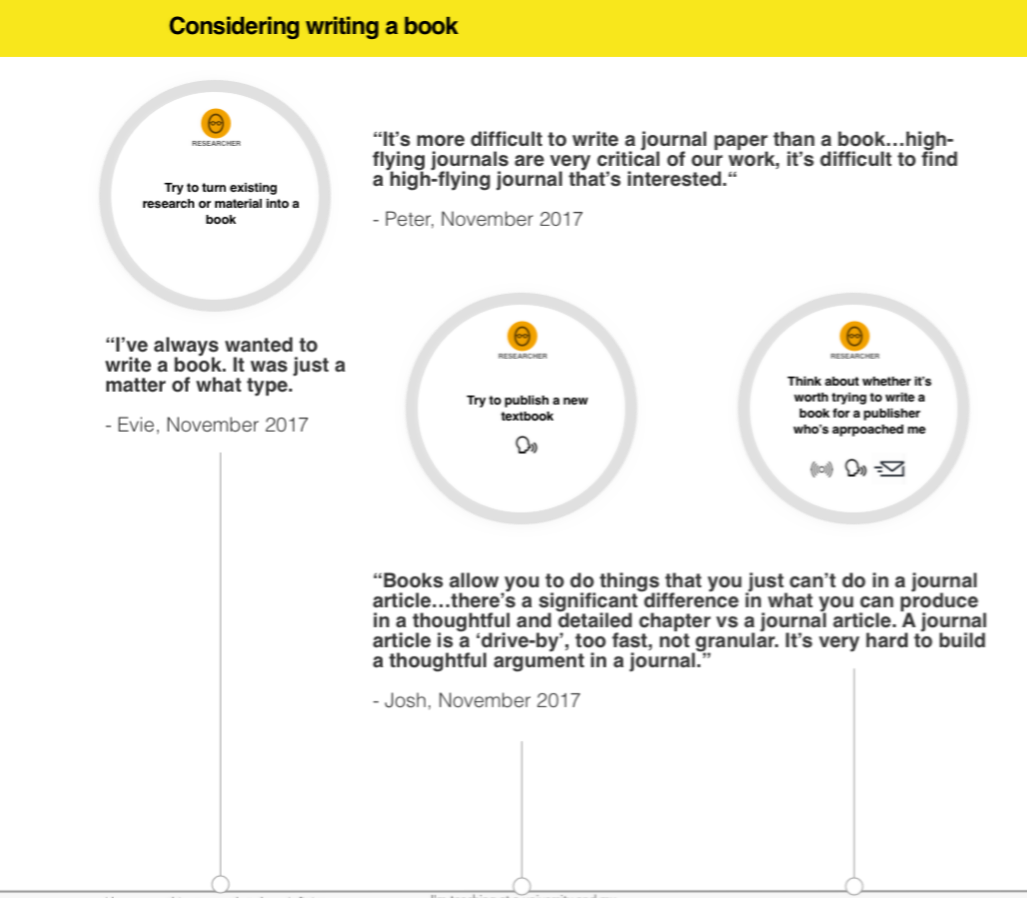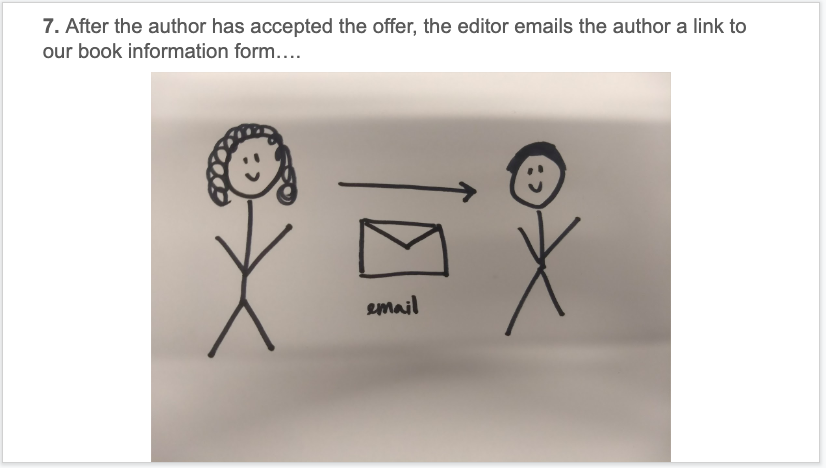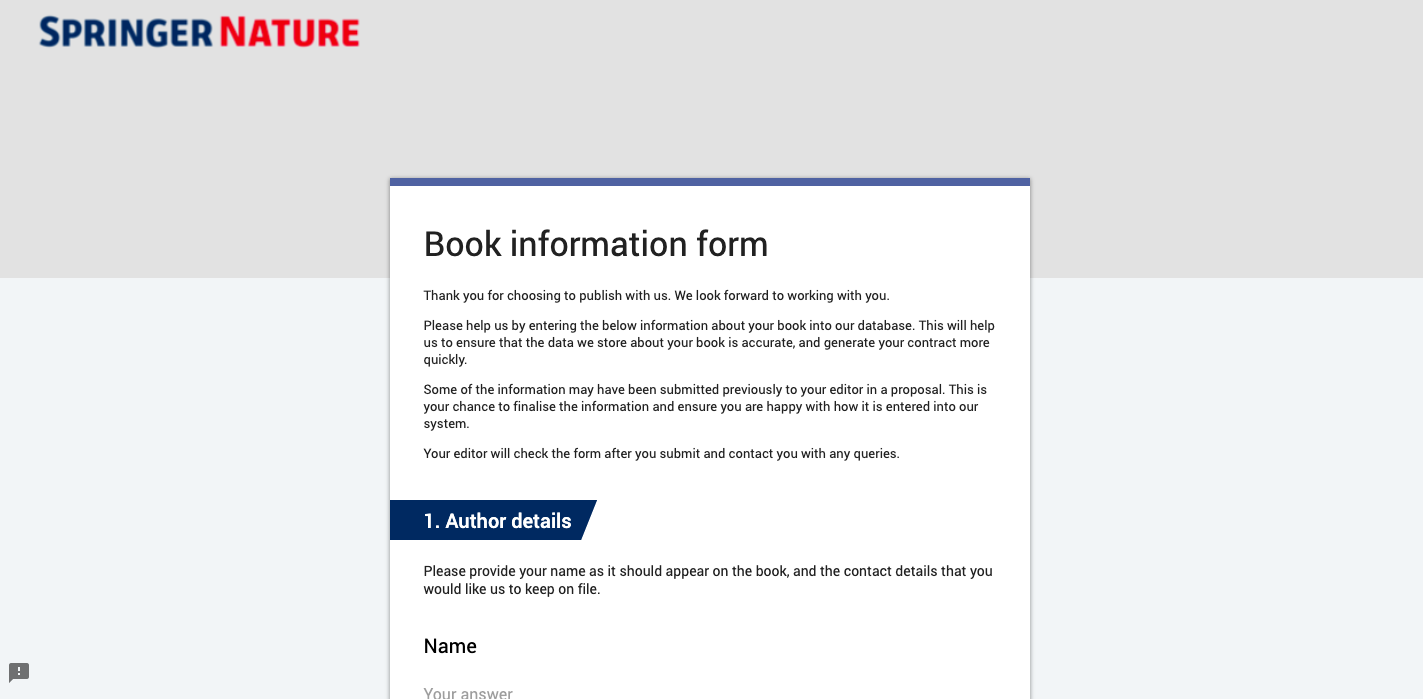Springer Nature’s book publishing experience

The problem
Springer Nature, an academic publisher of journals and books, wanted a new book publishing strategy. But this would prove to be tricky. The company’s book business consisted of multiple publishing units, product teams and systems; systems catered to multiple sets of users, from monograph authors and volume editors to Springer Nature editorial and production staff.
Teams in the books space weren’t collaborating, and no one was thinking about books holistically - there wasn’t a joined up picture of the existing book publishing workflow and author services. No one knew where to start when it came to strategy.
The outcome
I led a discovery phase to map out the current book publishing experience and uncover opportunities for improvement to inform Springer Nature’s book strategy.
I ran open-ended interviews with book authors and editors, designed surveys to validate our qual learnings further, summarised key findings via the Jobs to be Done framework, and created three customer journey maps and a service blueprint - giving the business a picture of the service for the first time.
Along the way, I visualised our goals and key assumptions to keep our learning on track; introduced stakeholders to their first user research sessions; and encouraged different areas of the business to start talking and collaborating.
In the end, my work led to different areas of the business agreeing on a focus for where to start making improvements and adopting shared objectives and key results for the first time, as well as improved collaboration and a new pattern for the proposal stage of our book publishing service.
My process
Kicking off by capturing unknowns and assumptions
I looked at existing strategy work from around the business to capture unknowns in the books space, and assumptions the business was making about what new solutions to build.
I created an opportunity tree to cross check potential solutions against the business’s desired outcomes, and help us pinpoint what assumptions and unknowns we should investigate first - because book publishing touched so many different types of users and systems, there was no way we could tackle everything at once.
 Opportunity tree draft
Opportunity tree draft
Open-ended research with book authors
The business had a major assumption that new and improved tools for book authors would improve their publishing experience with Springer Nature. But no UX research had ever been done at the company to understand book authors’ behaviours and needs. So I carried out open-ended depth interviews with a mixture of monograph authors and volume editors from different fields. I invited stakeholders to observe and take part in the analysis, to encourage collaboration.
Using the Jobs to be Done framework as a basis, I summed up the research findings in two customer journey maps, one capturing the experiences of monograph authors and another for volume editors. I also worked with the market research team on a survey to validate our learnings further.
 Monograph author customer journey map - click to zoom
Monograph author customer journey map - click to zoom
Then, together with a product owner, I created a prioritised list of the most important user problems to solve for book authors.
It was clear that the assumptions that we should build new publishing tools for book authors didn’t hold - authors didn’t care about systems, they were used to working in Word and communicating with Springer editors by email.
But we did spot opportunities to vastly improve the current experience without building expensive new systems.
Authors who reported a good experience with Springer Nature editors and clear communication during the publishing process were happiest and most likely to want to publish with Springer Nature again - even when there were problems with their finished book, such as mistakes being inserted at the production stage.
Digging deeper into our findings, we spotted many specific opportunities to improve communication with book authors during the publishing process. I summed this up through some job stories and “How might we?’s”.


Now we needed to understand how we could help free up busy Springer Nature editorial and production staff, giving them more time to spend communicating with book authors, and on other valuable activities.
Understanding how editors spend their time
We wanted to build a picture of how Springer Nature editors were working, what tasks took the most time, and what activities editors would like to have more time for.
This would not be easy, however - Springer Nature employs hundreds of editors across dozens of publishing units, all with different processes. And with their busy schedules, they would have little time to take part in our research activities.
To quickly get data on a typical editors’ day, I designed a quick activity that we could do with multiple editors at once, in person or remotely. We asked editors to write down tasks they do in a typical day, and divide them into categories: “Long/difficult”, “Quick/easy”, and “Fun”. We also asked them to list tasks they wished they had time for.
 Activity: “An editor’s day”
Activity: “An editor’s day”
I also began summing up what we were learning about editors as another customer journey map, using the Jobs to Be Done framework as a basis.
Once we had enough data to start seeing patterns, I created a list of common pain points stopping editors from focusing on more valuable tasks. To test whether the items on the list were the right ones, we held sessions where we invited multiple editors to view the list, choose the problems they most agreed with, and add any that were missing.



I used this as a basis to create a survey that we could send out to hundreds of editors, to collect data on the biggest problems common across all of Springer Nature editorial. This would help us understand where to start with helping editorial improve their workflow.
We also now had enough information about internal processes for me to create a service blueprint, bringing bringing together everything we’d learned about the experiences of external authors and internal staff into one map.
 Book publishing service blueprint - click to zoom
Book publishing service blueprint - click to zoom
I identified stages of the book publishing process that were common across different book types in different departments. This was the first step at establishing service patterns in Springer Nature’s wider publishing service; my large survey sent out to all of Springer Nature’s editors would help us see how the stages I identified in book publishing matched up with stages in the manuscript publishing.
UX advocacy and improved ways of working in the books space
Many colleagues working in the books programme at Springer Nature had limited experience with product discovery and UX, including the product owner working with me on the discovery phase, the agile product teams maintaining our books systems, and the editors we wanted to work with to improve processes.
As I led our discovery activities, I worked hard to involve these colleagues, to build relationships and give them firsthand experience of the value of product discovery and UX.
I invited stakeholders on other teams to observe our user interviews, getting them to help with analysis; they were fascinated by what they saw, and as a result asked us to help them test some of their assumptions about publishing tools.
I also ran sessions where we introduced editorial to the concept of user research and product discovery - then invited editors to help us flesh out our customer journey maps, using their knowledge about authors. The response was extremely positive, and we built up a panel of editor friends across dozens of publishing units who were ready to help us with future research and prototyping experiments.
I actively brought product owners across multiple teams in the books space together, getting everyone on the same page about the biggest user problems to come out of our research, and looking for common themes that would allow us to work together to improve the book publishing experience. I encouraged us to prioritise work together with a view to the bigger picture, and create a shared vision and objectives to work towards; this came together in a workshop where product owners from across the books space got together for the first time. There was now lots of excitement and momentum around working together to solve real user problems in book publishing.
Reimagining the proposal stage of book publishing
Now that teams in the books space were aligned and we were in agreement on where to focus, we could begin to actively improve the experience. I worked with the team to focus in on the proposal stage of book publishing, and prototype and test an improved process in the leanest way possible.
I storyboarded the stages of a reimagined process, and prototyped form fields using Google Forms. I was able to test this on editors, and work with the team to iterate and improve on the process, ultimately creating a new proposal form to streamline metadata collection.









Case studies
Case studies